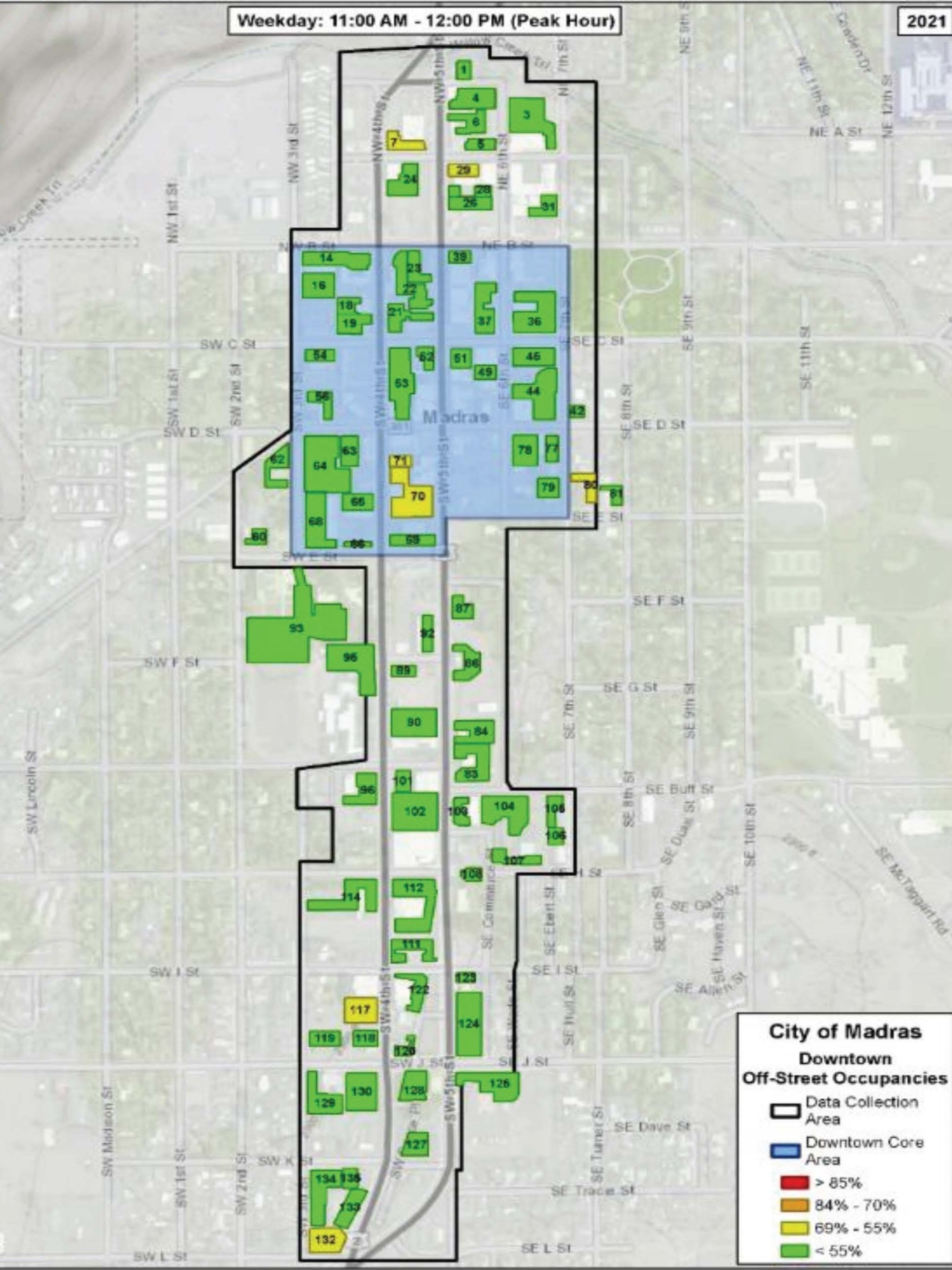Middle Housing & Parking Code Update, Madras, OR
-
Marcy McInelly
Erika Warhus
Pauline Ruegg
Elizabeth Nelson
-
Rick Williams Consulting
David Evans and Associates Inc.
Type
Zoning Code Amendments
Year
2022
Like most cities in Central Oregon, Madras needs more housing. The Urbsworks team led a citywide middle housing and parking code update to implement the Madras Housing Action Plan and urban renewal strategy and permit more affordable housing options. Code amendments addressed infill, greenfield, and downtown contexts, and coordinated the design of neighborhoods with Transportation System Plan (TSP) policies, including street standards. Because the number of required parking spaces and siting standards have a major impact on the cost of housing, the team partnered with a parking expert to evaluate parking needs and available capacity, then right-sized requirements for each neighborhood context.

We need a place for people who can't afford a $400,000 home. We don't have housing for the people we want to work in our community.
Nick Snead, Community Development Director, City of Madras
“
Code Concepts
1. More Housing Choices
Increase the range of permitted housing types in residential zones.
3. Right-sizing parking requirements
Right-size parking requirements and site design standards to support housing goals.
2.Housing in commercial zones
Permit higher intensity middle housing in commercial zones.
4. Context sensitive design strategies
Design strategies for residential development in different context areas.

Areas where Code Concept One applies

Areas where Code Concept Two applies

Code Concept Three eliminated required parking and established parking management for the downtown. Elsewhere, parking requirements were reduced.

Code Concept 4 established design approaches for different physical contexts, or neighborhood character areas.
Code Concept 1, Increase the range of permitted housing types in residential zones. Previously only very limited forms of residential uses were permitted in Madras’ commercial zones, including in the downtown core. No stand-alone residential uses, no single room occupancy (SROs) or other affordable housing types were permitted. Now these housing types are permitted in the downtown and the C-2 and C-3 zones along with other higher-intensity middle housing types such as townhomes and quadplexes.
Code Concept 2, Permit higher intensity middle housing in commercial zones. Middle housing is not feasible without some relief from conventional suburban parking requirements. Madras’ Housing Action Plan (HAP) directed the city to lower housing barriers and make more forms of housing financially feasible. The HAP specifically recommended reducing minimum parking requirements and modifying parking lot siting and parking standards. The Urbsworks project responded by adopting development code amendments that eliminated and/or reduced of parking requirements city-wide and established a downtown parking management strategy and plan
Code Concept 3, Right-size parking requirements and site design standards to support housing goals. Middle housing is not feasible without some relief from conventional suburban parking requirements. Madras’ Housing Action Plan (HAP) directed the city to lower housing barriers and make more forms of housing financially feasible. The HAP specifically recommended reducing minimum parking requirements and modifying parking lot siting and parking standards. The Urbsworks project responded by adopting development code amendments that eliminated and/or reduced of parking requirements city-wide and established a downtown parking management strategy and plan
Code Concept 4, Design strategies for residential development in different context areas. Middle housing will take several forms depending on the neighborhood or district context: Existing neighborhoods will see middle housing in the form of infill. In other areas, middle housing will form new subdivisions. In Madras’ downtown middle housing will fill in transitional areas on the edges of downtown, and higher-intensity residential forms will fill in downtown blocks. Different design challenges and solutions exist for each context area. To respond, Urbsworks developed context-specific strategies related to block size and configuration, lot and building frontage and access, and on-site parking. Design strategies were developed for these context areas: Greenfield/Concept Plan Areas, Residential Infill, and Downtown.
Parking lots are dead zones. If you replace parking lots with buildings, you have more opportunities for commercial, retail, restaurants. If you have more of that and they're closer together, you have reason to come downtown.
Jeff Broderick, Associate Planner, City of Madras, Oregon
“
More people living and working in the downtown area increases the demand for commercial dining, professional services, and businesses in the downtown core. Current code requires businesses to provide off-street parking. After a lot of thought, we determined (the off-street parking requirement) threatens downtown revitalization.
Nick Snead, Community Development Director, City of Madras, Oregon
